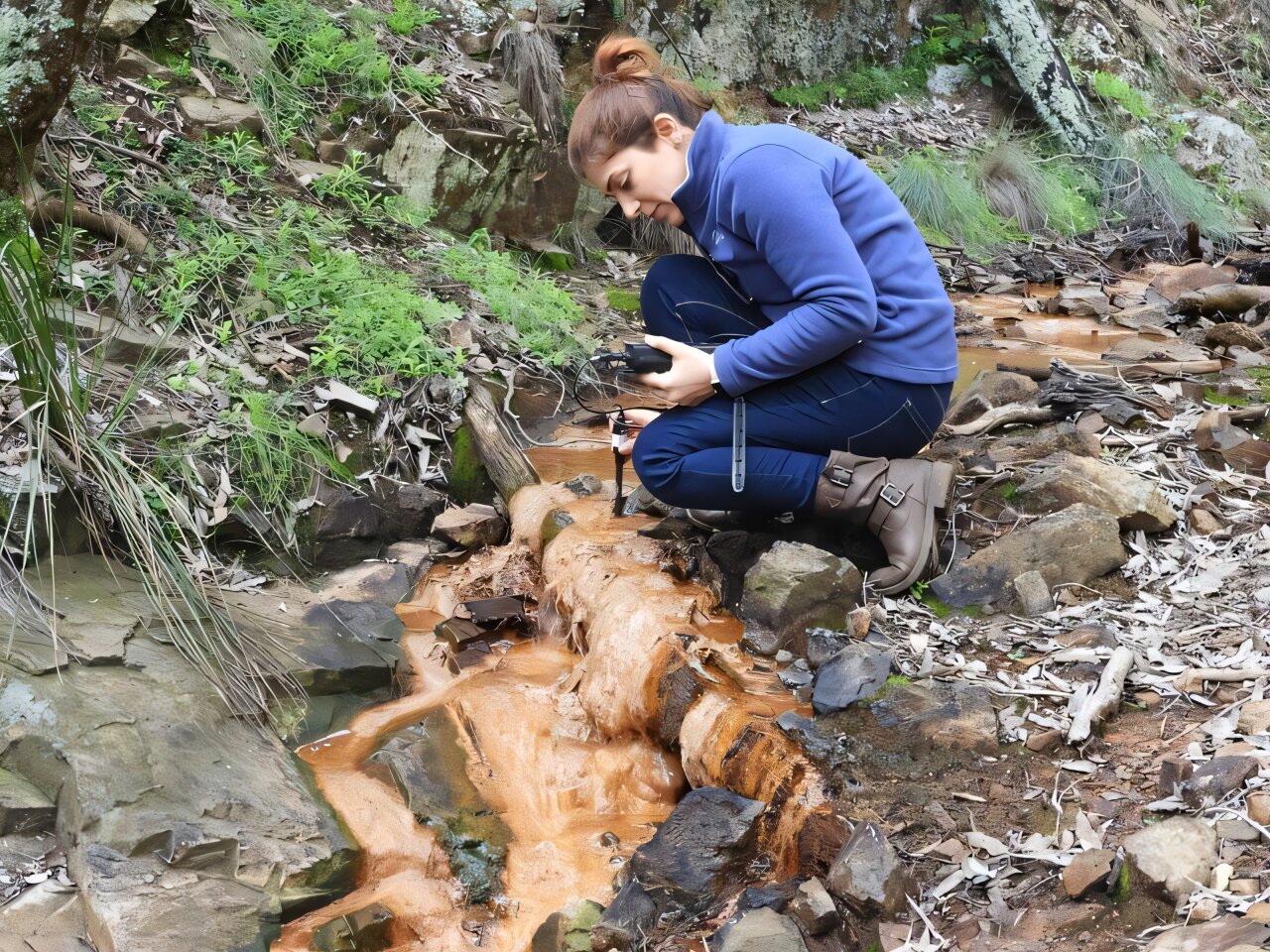Jarosite is a dusty yellow mineral you might see crusting the surface of mine tailings or dried-out wetlands.
It forms in highly acidic soils, when iron, sulfate and potassium or sodium come together under acidic, oxidizing conditions.
These conditions are common in mine waste sites. Known as acid mine drainage (AMD), sulfide minerals react with air and water, creating highly acidic water loaded with heavy metals.
In these harsh settings, jarosite starts to crystallize, forming hard, yellowish crusts on the surface of mine tailings.
Jarosite has a hidden power. It can trap toxic metals like arsenic, lead and antimony inside its structure.
I’ve been investigating ways to stabilize or transform jarosite to hold on to contaminants more securely.
One promising approach involves a reduced form of iron we call Fe(II).
Under the right conditions, Fe(II) causes a transformation from jarosite into more stable minerals, like goethite or hematite. These new minerals are less likely to release the toxic metals, offering an environmentally effective solution for managing contaminated soils and mine waste.


